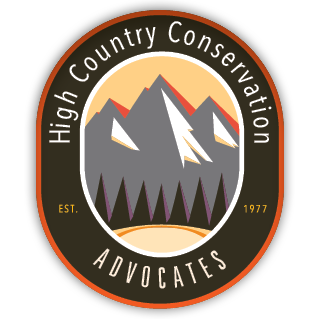GMUG draft revision reexamines Wild and Scenic eligibility
Taylor River
Advocates urge public to speak up for local rivers
Bella Biondini, Times Staff Writer
When it comes to the U.S. Forest Service (USFS) draft plan for much of Gunnison County’s public lands, the conversation between the agency and conservation groups has largely centered on wilderness, big game habitat and logging. But Crested Butte’s Kestrel Kunz has made it her mission to keep another issue front and center: protections for rivers.
Kunz is a stewardship director with American Whitewater. She is asking the planners at the Grand Mesa, Uncompahgre, Gunnison (GMUG) National Forests to use the authority given the agency under the Wild and Scenic Rivers Act to protect more rivers and streams.
The GMUG forest plan revision process is a once-in-a-generation opportunity to influence how the USFS manages a huge chunk of Colorado’s public lands. The GMUG has in it 36,000 miles of rivers and streams, some of which wind through the Western Slope’s most remote landscapes. Yet the Forest Service is considering less than 4% of those miles as eligible for protection under the Wild and Scenic Rivers Act.
That number needs to be increased, Kunz said.
“The Wild and Scenic eligibility component provides us with the most concrete tool to protect rivers on the forest,” Kunz said. “Focusing on Wild and Scenic eligibility is not talked about a lot in Colorado and I think there’s a big opportunity to do so, especially on such an expansive forest plan.”
The Wild and Scenic Rivers Act, signed into law in 1968, was written with the explicit goal of preserving rivers and streams with “outstanding” scenic, recreational, geologic, wildlife and cultural values for future generations. If a river is found eligible, it is managed and protected under the act.
To receive designation, a river segment must meet two fundamental requirements. The river must first be “free-flowing” or flowing in a natural condition without dams or waterway modifications. Second, a river must possess one or more “outstanding remarkable values.”
The Forest Service has set a high standard for Wild and Scenic rivers. They need to be outstandingly remarkable within the entire region. In the draft plan, the agency defined that as the State of Colorado, but its policy says they could even look nationwide, said USFS Forest Planner Samantha Staley.
“So when we think about that threshold, I think we can actually be really proud that we have as much as 118 miles, or 4% of our streams, potentially classified that way,” Staley said.
The current forest plan went into effect in 1983 and did not identify eligible Wild and Scenic river miles. The new draft revision will contain the first official comprehensive eligibility review of rivers within the GMUG.
The last time river eligibility was updated was with the forest plan revision 38 years ago, said Julie Nania, water director for High Country Conservation Advocates. The USFS created a proposed list in 2006, but it was not finalized nor did it impact management.
The USFS made some minor improvements since the last draft iteration by including Muddy Creek and Fall Creek for their cutthroat populations. But between 2006 and 2019 drafts, 36.5 miles of eligible river segments were lost. The Slate, East and Taylor rivers, along with Bear Creek were all deemed ineligible.
“We lost quite a few creeks that I think a lot of local entities, and bigger entities from afar, think probably should have made the cut,” Nania said.
The wild and scenic requirements tend to fall on the subjective side, but this is one of the ideal areas for public participation, she added. Anthracite Creek was also added because the area was identified by the public as an important reach to a large number of people.
“Part of it is absolutely looking for these really important cutthroat populations, or critical boreal toad habitats that rely on these rivers,” Nania said. “But another part is looking at outstanding recreational opportunities or outstanding scenery.”
The Taylor River, located within the Gunnison National Forest, fills with paddlers and anglers each year. In the 2019 draft, the Forest Service characterized the Taylor as “not highly scenic” but that the agency would consider its potential inclusion for its recreational value.
Although river recreation is traditionally not addressed as robustly as trail or land-based use, Kunz said sustainable recreation can play an important role across the forests, as well as on rivers.
“It’s going to take a lot of people to stand up and tell the Forest Service how much they care about the Taylor and the East River and other local rivers,” Kunz said. “If we get a lot of people to speak up on this issue, then we can move the needle a little bit and keep adding river miles and river segments to the eligibility inventory.”
The Forest Service is still accepting comments on all GMUG rivers and streams. Stanley said so far the agency has not received feedback that demonstrates these particular segments are the best representatives of their features in Colorado, but they’re not ruling them out.
Water conservationists urged the public to speak up for their rivers and watersheds as the draft plan moved into its 90-day formal comment period. Comments will be used to improve the final plan and will be accepted until Nov. 12, 2021.
Direct engagement from the public is invaluable to the Forest Service for river protection and moving policy forward, said Mike Fiebig, director of the Southwest River Protection Program at American Rivers.
“Forest planning is the best way for people to engage in protecting the last best free flowing rivers in their national forests,” Fiebig said. “I think it’s an unmatched opportunity that only comes around every 20 years or so.”
(Bella Biondini can be contacted at 970.641.1414 or bella@gunnisontimes.com.)


